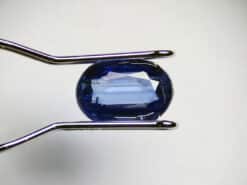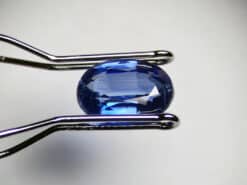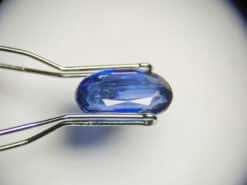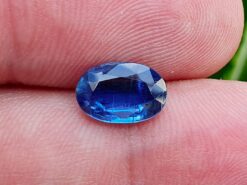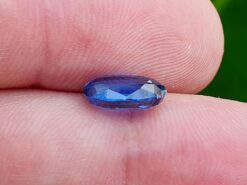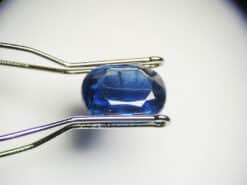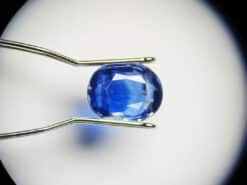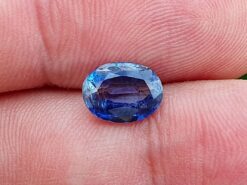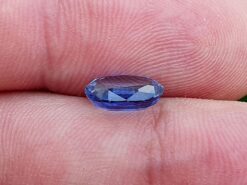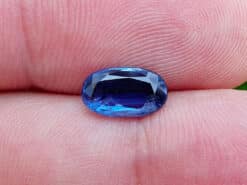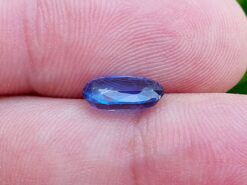Kyanite
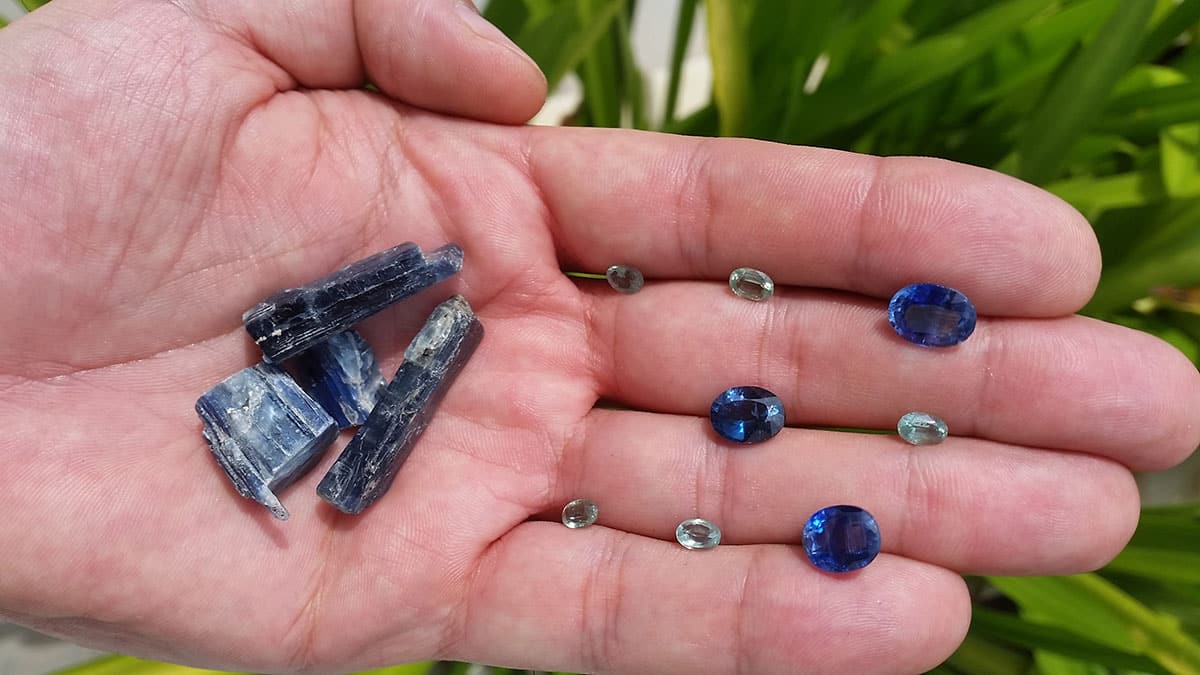
Blue and black kyanite stone meaning.
Buy natural kyanite in our shop
Kyanite is a typically blue silicate mineral, commonly found in aluminium rich metamorphic pegmatites and/or sedimentary rock. in metamorphic rocks generally indicates pressures higher than four kilobars.
Although potentially stable at lower pressure and low temperature, the activity of water is usually high enough under such conditions that it is replaced by hydrous aluminosilicates such as muscovite, pyrophyllite, or kaolinite. It is also known as disthene, rhaeticite and cyanite.
Kyanite is a member of the aluminosilicate series, which also includes the polymorph andalusite and the polymorph sillimanite. It is strongly anisotropic, in that its hardness varies depending on its crystallographic direction. This anisotropism can be considered an identifying characteristic.
At temperatures above 1100 °C it decomposes into mullite and vitreous silica. This transformation results in an expansion.
Its name comes from the same origin as that of the color cyan, being derived from the Ancient Greek word κύανος. This is generally rendered into English as kyanos or kuanos and means “dark blue”.
identification
Kyanite’s elongated, columnar crystals are usually a good first indication of the mineral, as well as its color, when the specimen is blue. Associated minerals are useful as well, especially the presence of the polymorphs of staurolite, which occur frequently.
However, the most useful characteristic in identifying is its anisotropism. If one suspects a specimen to be a genuine stone, verifying that it has two distinctly different hardness values on perpendicular axes is a key to identification, it has a hardness of 5.5.
The stone occurs in gneiss, schist, pegmatite, and quartz veins resulting from high pressure regional metamorphism of principally pelitic rocks. It occurs as detrital grains in sedimentary rocks. It occurs associated with staurolite, andalusite, sillimanite, talc, hornblende, gedrite, mullite and corundum.
Black kyanite
Black color is an aluminum-rich silicate mineral that forms in pegmatites at extremely high pressure. Most of the black stones on the market comes directly from the Minas Gerais region of Brazil, although there are other important localities within Burma, South Africa, and India.
Occurrence
Kyanite occurs in Manhattan schist, formed under extreme pressure as a result of the two landmasses that formed supercontinent Pangaea.
Blue and black kyanite meaning and healing properties benefits
The following section is pseudo scientific and based on cultural beliefs.
Blue and black stone meaning and healing properties benefits opens the throat chakra, encouraging communication and self-expression. It cuts through fears and blockages, helping to speak one’s truth. It is very useful for public speakers and performers as it strengthens the voice and heals the throat and the larynx.
Sample from Nepal
Sample from Tanzania
FAQ
What’s kyanite good for?
An excellent stone for meditation and attunement. It will not retain negative vibrations or energy, therefore never requiring clearing. The stone aligns all chakras and subtle bodies instantly. It provides balance of yin-yang energy and dispels blockages, moving energy gently through the physical body.
What is the value of kyanite?
Price is between 20 $ to 200$ US per carat, depending on the quality, cut, clarity and weight.
Where do you put kyanite?
It is a powerful stone to use in meditation, and it is most effective if you use it at the heart chakra as this is the central chakra of the body.
Is blue kyanite rare?
Clean and big size crystals are rare. Only small quantities come out of mines.
How is kyanite mined?
The quartzite is drilled and blasted, secondary breaking is sometimes done with a hydraulic hammer. The ore is picked up with diesel powered shovels, loaded into trucks, and hauled to the primary crusher.
Natural kyanite for sale in our gem shop
We make custom made kyanite jewelry as engagement rings, necklaces, stud earrings, bracelets, pendants… Please contact us for a quote.

